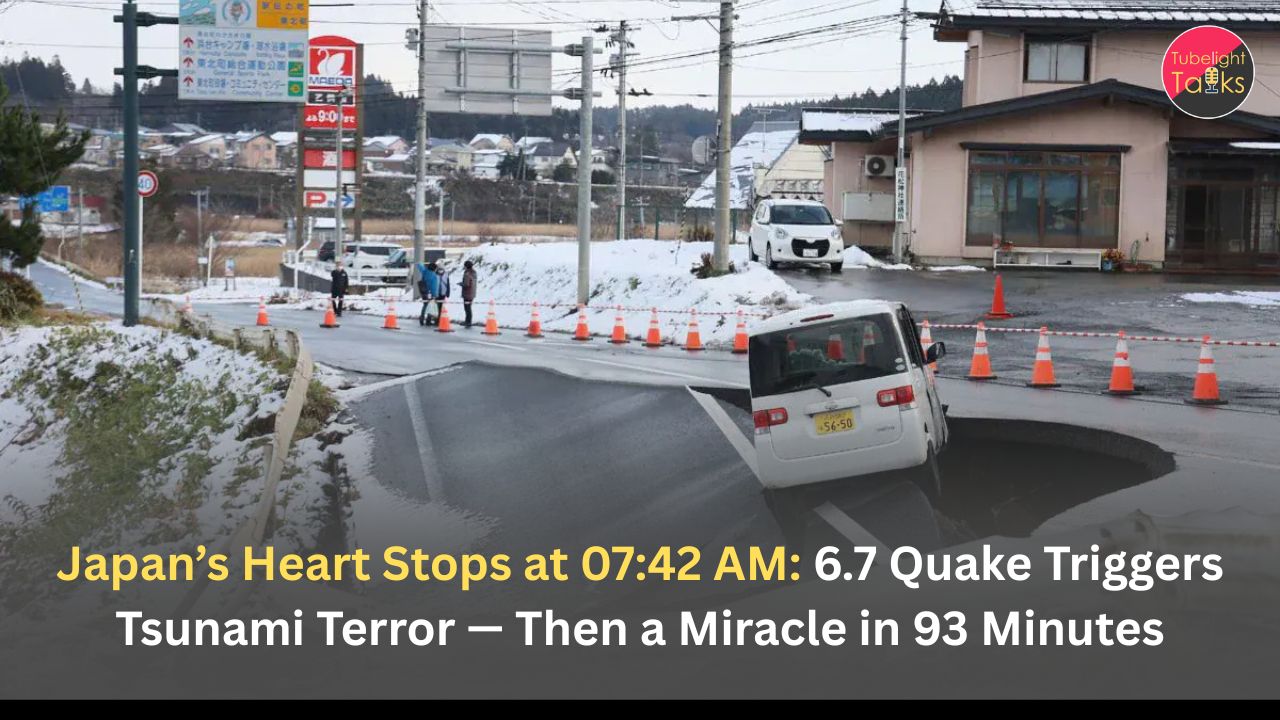Sichuan Bridge Collapse: In a disturbing infrastructure failure, a section of the Hongqi Bridge in Maerkang City, located in China’s southwestern Sichuan province, collapsed on Tuesday, barely months after its official completion. Part of a strategically important highway connecting China’s central heartland to Tibet, the bridge’s collapse has triggered landslides and serious safety questions—despite pre-emptive warnings issued just a day earlier.
The incident comes at a time when countries globally are pushing hard on infrastructure expansion. However, this collapse serves as a cautionary tale about quality assurance, geological risk assessments, and public safety in rapid development projects.
The Collapse: What We Know So Far
Key Details:
- The Hongqi Bridge, spanning 758 metres, is part of a national highway connecting Sichuan to Tibet.
- On Monday, local authorities had closed the bridge to all traffic after detecting cracks in surrounding slopes and signs of shifting terrain.
- On Tuesday, a portion of the bridge collapsed, triggering landslides in nearby areas.
- No casualties or major injuries were reported as of the time of this report.
- The contractor responsible, Sichuan Road & Bridge Group, had recently announced the bridge’s completion on its social media handles earlier this year.
Critical Questions That Remain
Despite proactive steps from authorities to close the bridge, the event raises several vital questions:
1. Was It a Construction or Design Fault?
The early collapse points to potential flaws in design, materials, or workmanship. Did the project suffer from:
- Inadequate geotechnical assessments?
- Construction shortcuts due to deadline pressure?
- Poor drainage and slope stabilization in a mountainous region prone to instability?
2. Was Terrain Instability Properly Monitored?
Given that slope cracking was observed before the collapse, it’s vital to assess:
- The sensitivity and accuracy of geological monitoring systems.
- Whether post-construction surveillance protocols were active and enforced.
3. Impact on Regional Connectivity
The bridge was a key route between China’s central regions and Tibet, making it essential for:
- Logistical supply lines
- Military movement
- Economic trade and tourism
Its collapse will likely:
- Delay supply chains
- Increase pressure on alternate, less capable routes
- Worsen local isolation in Maerkang and surrounding Tibetan areas
4. Will There Be Accountability?
The incident puts Sichuan Road & Bridge Group and local authorities under scrutiny. Will China:
- Conduct an independent, transparent investigation?
- Hold the contractor legally and financially accountable?
- Review national infrastructure protocols to avoid future disasters?
What Does This Reveal About Global Infrastructure Trends?
This event highlights a pattern seen not just in China but in rapidly developing countries across Asia, Africa, and Latin America:
- Speed trumps safety in mega projects.
- Infrastructure push is driven by political deadlines, not engineering timelines.
- Public trust erodes when newly opened bridges, roads, and dams fail catastrophically.
Another bridge collapse in Gujarat, India (Morbi Bridge). The tragedy, which occurred on October 30, 2022, claimed the lives of at least 135 to 141 people and was found to have resulted from poor maintenance, structural failures, and a rushed, unauthorized reopening. (https://www.bbc.com/news/world-asia-india-63496684.amp)
These cases are stark reminders that engineering safety and ethics must never be compromised.
Environmental and Local Impact
Landslides and Terrain Risk
The collapse has reportedly triggered landslides, raising concerns about:
- Further slope instability
- Safety of local residents and infrastructure
- Impacts on wildlife corridors and river ecosystems
With winter approaching in Tibet and Sichuan, access routes will be critical for aid, supplies, and evacuation, increasing the urgency for emergency response teams.
When Foundations Are Weak, Collapse Is Inevitable
This incident isn’t just an engineering failure—it’s a metaphor for life. According to the spiritual wisdom revealed by Sant Rampal Ji Maharaj, the visible collapses we see—be it bridges, economies, or relationships—often have unseen roots in flawed foundations.
Just as a bridge built without stable ground or proper oversight is doomed to fail, a human life without spiritual grounding is equally vulnerable. Sant Rampal Ji Maharaj explains that the real foundation of peace, stability, and success lies in following true spiritual knowledge (SatGyaan). This means:
- Understanding the purpose of life
- Living according to the Constitution of the Supreme God
- Taking Naam Diksha (Initiation) from a Complete Saint
- Avoiding the destructive paths of greed, shortcuts, and ignorance
True wisdom ensures that both worldly and spiritual bridges hold strong—even during life’s worst storms. For more, watch spiritual discourses by Sant Rampal Ji Maharaj on YouTube or follow verified updates on X (Twitter).
Building Safe Bridges—In Life and Nation
A Message for Governments, Engineers, and Citizens
Safety must come before speed. Every project must begin with a solid foundation—both literally and morally. Spiritual knowledge builds internal resilience, which reflects in our societies. Whether it’s a physical bridge or a bridge to truth, honesty, preparation, and righteousness are the real pillars.
Let this collapse be more than just a news story. Let it be a turning point for accountability, awareness, and awakening.
Also Read: Thailand Probes Skyscraper Collapse After Earthquake Tragedy in Myanmar
FAQs on Sichuan Bridge Collapse
Q1. When and where did the Hongqi Bridge collapse?
On Tuesday, in Maerkang City, Sichuan province, China.
Q2. What caused the collapse?
Terrain instability due to cracked slopes and shifting ground, which had been detected a day earlier.
Q3. Were there any casualties?
As per initial reports, no deaths or injuries were confirmed.
Q4. Who built the bridge and when?
The Sichuan Road & Bridge Group completed the bridge earlier this year; it was part of a key highway to Tibet.
Q5. What risks now exist in the area?
Ongoing landslide threats, regional traffic disruptions, and potential danger to nearby infrastructure and residents.










